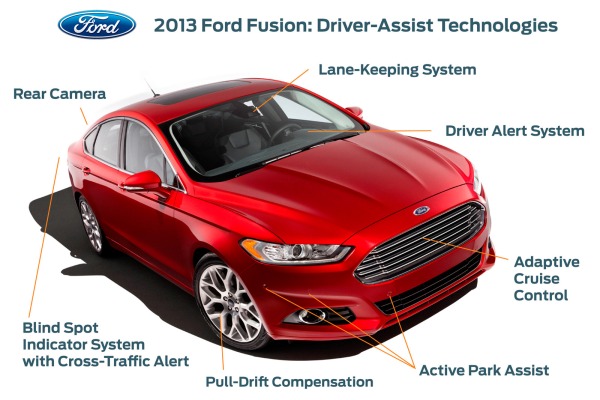
The idea of self-driving cars isn't new. The GM-sponsored Futurama exhibit at the 1939 World's Fair in New York had a display that featured them. What the visionaries might not have foreseen, though, is that the development of safety technology has been the key to bringing the autonomous-car dream to reality.
"Basically, autonomous driving technology has already been invented," says John Hanson, head of safety, environmental and quality communications for Toyota Motor Sales U.S.A. It started with antilock brake systems "and has progressed steadily," he says.
The Building Blocks for Autonomous Cars
The elements that make up autonomous driving are the active safety technologies that automakers and component developers are using now to help reduce the number and seriousness of road accidents, says Jay Joseph, a safety systems and automated driving specialist at American Honda Motor Corp., an industry leader in active safety.
Antilock brake systems showed that sensors and electronically controlled components could perform the critical emergency braking procedure better than most humans.
From there, automakers progressed to other sensor-and-computer systems such as stability and traction controls. They tied in GPS locating devices and gyroscopes and angle sensors to do such things as prevent SUV rollovers.
They tied cruise control to forward-looking radar and electronically controlled braking and acceleration systems to provide rear-collision mitigation systems. These help cars maintain safe following distances and can slow or even stop a car to reduce or avoid a rear-end crash.
Cameras that can identify lane markers now are used for lane-departure warning systems that alert inattentive drivers that their car is drifting dangerously close to the next lane. Some systems also assist with steering input to bring the car back to the middle of its own lane if the driver doesn't respond to the warning.
German components developer Continental recently showed a system that combines multiple sensors and electric controls to help drivers maneuver around and past an obstacle at speeds that could cause untrained, unassisted motorists to lose control of their vehicles.
Next Steps
For autonomous driving to truly live up to its name, though, the vehicles must be able to go out on any road and interact with all the other traffic: human-operated cars and trucks, bicycles, pedestrians and other autonomous vehicles, says Nady Boules, head of General Motors Corporation's electric and control systems research lab. He and others in the auto industry see that kind of low-tech/high-tech mix existing for decades to come.
For a while, researchers pursued an idea that's related to autonomous cars, but is a very different idea: automated driving. In this scheme, cars would communicate with the road and use information transmitted through cables buried in the roadbed to travel, unimpeded by cross traffic, in long caravans. Automated driving would require "a massive investment in infrastructure, and who wants to pay for that, these days?" says researcher J. Christian Gerdes, head of the Center for Automotive Research at Stanford University (CARS) program.
In autonomous driving, the car is managing itself and using vehicle-to-vehicle (V2V) communications to "talk" to other cars, updating traffic information, alerting other vehicles to its presence and even warning of upcoming traffic jams.
Indeed, transportation researchers at the University of Michigan, working under a $19 million Transportation Department grant with a number of wireless communications systems developers, have just launched a massive V2V safety experiment in Michigan.
For the next year, 2,800 cars outfitted with a variety of active and passive safety systems and wifi systems will be operating in the area around Ann Arbor, Mich. The goal, researchers say, is to gather real-world, real-time data about effectiveness and reliability of systems that enable the cars to talk to one another, to receive and exchange information from land-based transmitters on various traffic and infrastructure situations and to trigger on-board safety alerts and accident avoidance systems when necessary.
A few things remain to be done before autonomous driving is really ready to roll. Carmakers need to add more sensors and then figure out the programming algorithms to enable them to identify such objects as pedestrians, bicyclists, stop signs and street lamps. The car's systems must be able to instantaneously map the objects' surroundings and make snap judgments about the probable behavior of other vehicles and occupants on the roads.
But as Google's ongoing autonomous driving experiment shows, this is far from the realm of science fiction.